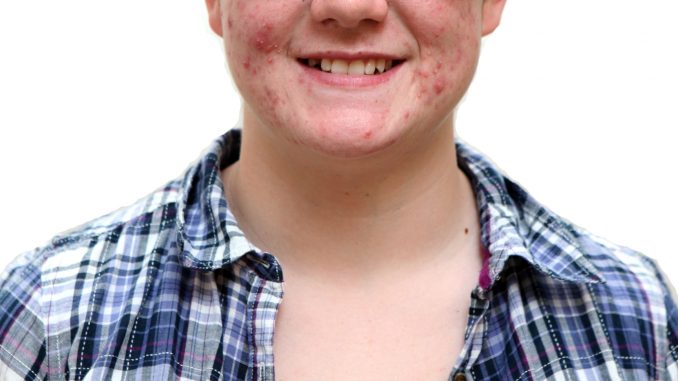
 Imagine being a quick subway ride — mere minutes — from some of the most innovative, cutting-edge live theater experiences in the country. Imagine having international dance companies, up-and-coming artists and experimental theater all in your own city, available to you. You probably think you would have to live in New York or Los Angeles or London, right? Wrong. Not when we have the Philadelphia Live Arts Festival and Philly Fringe, which opened on Sept. 7 and runs through Sept. 22, right in Temple’s backyard.
Imagine being a quick subway ride — mere minutes — from some of the most innovative, cutting-edge live theater experiences in the country. Imagine having international dance companies, up-and-coming artists and experimental theater all in your own city, available to you. You probably think you would have to live in New York or Los Angeles or London, right? Wrong. Not when we have the Philadelphia Live Arts Festival and Philly Fringe, which opened on Sept. 7 and runs through Sept. 22, right in Temple’s backyard.
Throughout the course of those two weeks, thousands of artists will come together to produce more than 100 shows, many for the only time. Because the festival showcases independent artists who are on the fringe of popular culture, these shows tend to touch on topics not seen too often, including gender and sexuality.
Philly Fringe includes an impressive amount of LGBT-related productions this year. One of the more talked about shows this year is “The Gate Reopened,” from openly-gay choreographer Brian Sanders. A reworking of his 2003 show, “The Gate,” one of Fringe’s most popular productions, “The Gate Reopened” fills Pier 9 on Columbus Boulevard with a 20-foot-high cylindrical octagon susending eight dancers around it.
Playing just two subway stops south of Main Campus at The Arts Garage on Ridge Avenue is Diana Son’s play, “Stop Kiss,” which traces the relationship between two women leading up to their first kiss, which has devastating repercussions. And Jacqueline Goldfinger’s, “Raw Stitch” is playing. It is inspired by, as she explained to the Philadelphia Gay News, “young women, in [their] late teens and early 20s trying to figure out our sexual identities and sometimes making great decisions and sometimes making destructive decisions.”
OK, now I’ve told you about all these exciting LGBT productions, but there’s no way you can go because you’re a poor college student and theater tickets are expensive, right? Wrong again. A lot of performances are free and many offer student discounts.
So now you have no excuse. Go out and support Philadelphia actors, writers, directors and producers, many of whom are Temple alumni. More importantly, support LGBT productions — even beyond those included in the Philly Fringe festival.
Support LGBT movies and television shows with LGBT characters. There are so few mainstream movies featuring gay characters and virtually zero featuring a romantic story between two gay characters. Netflix has an entire “Gay & Lesbian” section on their website, and I’ve heard of maybe five of the movies listed. We can have two movies come out in one year featuring straight couples in the same exact plot, but we can’t have one about a gay or lesbian couple?
While television is a much more inclusive place, with the success of shows like “Glee” and “Modern Family,” a report issued by the Gay & Lesbian Alliance Against Defamation last year found that 2.9 percent of regular characters on television were lesbian, gay, bisexual or transgender. Out of 647 characters, only 19 were lesbian, gay, bisexual or transgender. Out of all the TV shows on all the channels, there were only 19 characters that we could see ourselves in — that we could connect to.
Growing up, I had quite a few characters around me that I could see myself in: Hermione from “Harry Potter,” Topanga from “Boy Meets World.” As I got older, however, I found myself no longer being able to relate to the female characters I was seeing.
The girls who pined after the popular boys, or who couldn’t choose between two great guys were nothing like me. It wasn’t until I saw how excited I was to see stories like Emily on “Pretty Little Liars” or Santana on “Glee” that I realized why.
Finally, I could turn on the TV every week and see someone who is like me, who is going through the same things I am going through. No matter how many friends or allies you have surrounding you, there’s something isolating about watching a show about the “universal high school experience” or a movie that supposedly “captures our generation” — and not being able to see yourself.
The only way we’re going to get more LGBT stories on television, in the movies or on stage is if we support the ones we have now and show producers that there is a desire for more.
Take advantage of the shows playing at the Philadelphia Live Arts Festival and Philly Fringe to support local LGBT artists, so next year there are even more LGBT-related productions.
Support movies and television shows that feature LGBT characters because for some, those 19 characters are the only other gay people they see on a regular basis. Show people that there is an audience for LGBT media because somewhere there is a kid in Ohio, the only gay student in his school, who feels a little less alone when he watches “Glee.”
Sara Patterson can be reached at sara.patterson@temple.edu.


Be the first to comment